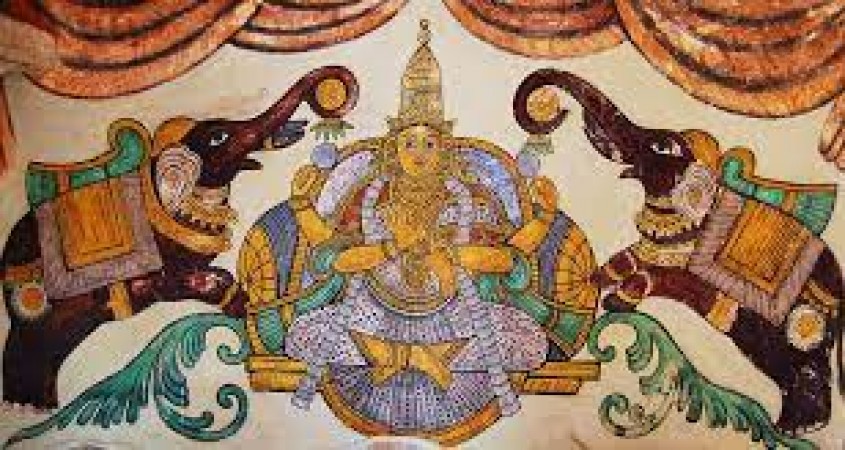
Hinduism, one of the world's oldest religions, has a rich and diverse tradition of art that spans millennia. Art, in various forms, has played a significant role in Hinduism, serving as a means of spiritual expression, cultural representation, and connecting with the divine. From awe-inspiring temples to intricate sculptures, colorful paintings, and soul-stirring music and dance, Hindu art embodies the essence of this ancient faith and offers a glimpse into its profound spiritual beliefs and cultural heritage. Hinduism and art share an inseparable bond, reflecting the soul of a diverse and ancient spiritual tradition. From the grandeur of temple architecture to the subtlety of intricate paintings and the rhythm of sacred music and dance, Hindu art is a medium through which the eternal truths of this timeless faith are celebrated and communicated. It provides a visual and auditory tapestry that captures the essence of Hindu spirituality, inspiring devotion, contemplation, and a deeper understanding of the cosmos and the self.
1. Temples as Architectural Marvels: Hindu temples are a hallmark of Hindu art and architecture. These magnificent structures are not merely places of worship but also represent the cosmic order and the dwelling places of the divine. The intricate carvings and sculptures adorning the temple walls narrate stories from Hindu mythology and depict various gods and goddesses. The architecture itself is a reflection of sacred geometry and the principles of Vastu Shastra, aligning the temple with cosmic energies.
2. Iconography and Deity Representations: Hindu art is replete with images and iconography of various deities, each having symbolic significance. Gods and goddesses are depicted with multiple arms, holding sacred objects, and adorned with specific symbols, colors, and attributes. For example, Lord Vishnu is often portrayed with four arms, holding a conch shell, a discus, a mace, and a lotus flower. Such representations carry profound spiritual meanings and reflect the diverse facets of the divine.
3. Sculptures and Statues: The tradition of sculpting divine figures and deities in Hindu art has a long history. Temples, cave complexes, and outdoor sites across India house some of the most exquisite and awe-inspiring sculptures. These sculptures often depict gods and goddesses, celestial beings, mythical creatures, and scenes from epic narratives. The artistry and skill involved in creating these sculptures exemplify the devotion and reverence that artists have for the divine.
4. Paintings and Murals: Hindu art also finds expression in the form of paintings and murals. From ancient frescoes in cave temples to intricate miniature paintings and vibrant contemporary art, Hindu themes have been portrayed on various canvases. The traditional Patachitra art of Odisha, the Rajasthani Miniature paintings, and the Tanjore paintings of South India are just a few examples of the diversity of Hindu art in painting.
5. Music and Dance as Divine Expression: In Hinduism, music and dance have a sacred dimension and are seen as offerings to the divine. The classical Indian dance forms, such as Bharatanatyam, Kathak, Odissi, and others, often incorporate stories from Hindu mythology and express spiritual themes. Similarly, classical Indian music, known as "Raga Sangeet," explores different ragas (melodic modes) that evoke specific emotions and moods, offering a spiritual experience to both performers and listeners.
6. Festivals and Rituals: Hindu festivals are vibrant celebrations where art and creativity play a central role. Rangoli, intricate patterns made with colored powder or rice flour, adorn homes during festivals like Diwali. Elaborate processions, colorful floats, and grand displays of art are common during religious festivities. These artistic expressions not only celebrate the divine but also foster a sense of community and cultural identity.
7. Symbolism and Spirituality: Every aspect of Hindu art carries deep symbolism and spiritual significance. Colors, shapes, and patterns are chosen carefully to represent various aspects of the divine, the cosmos, and the human psyche. Hindu art serves not only as a means of worship and devotion but also as a medium for seekers to connect with the divine presence within themselves.
Hindu art is not merely an expression of aesthetics but a sacred journey of the soul, carrying the torch of tradition, culture, and spirituality through the ages, inviting all to immerse themselves in its divine beauty.
Also read - Trimurti: The Holy Trinity of Hinduism
The Role of Yoga and Meditation in Hinduism: A Path to Spiritual Awakening
The Philosophy of Sanatana Dharma: Eternal Truths and Universal Principles